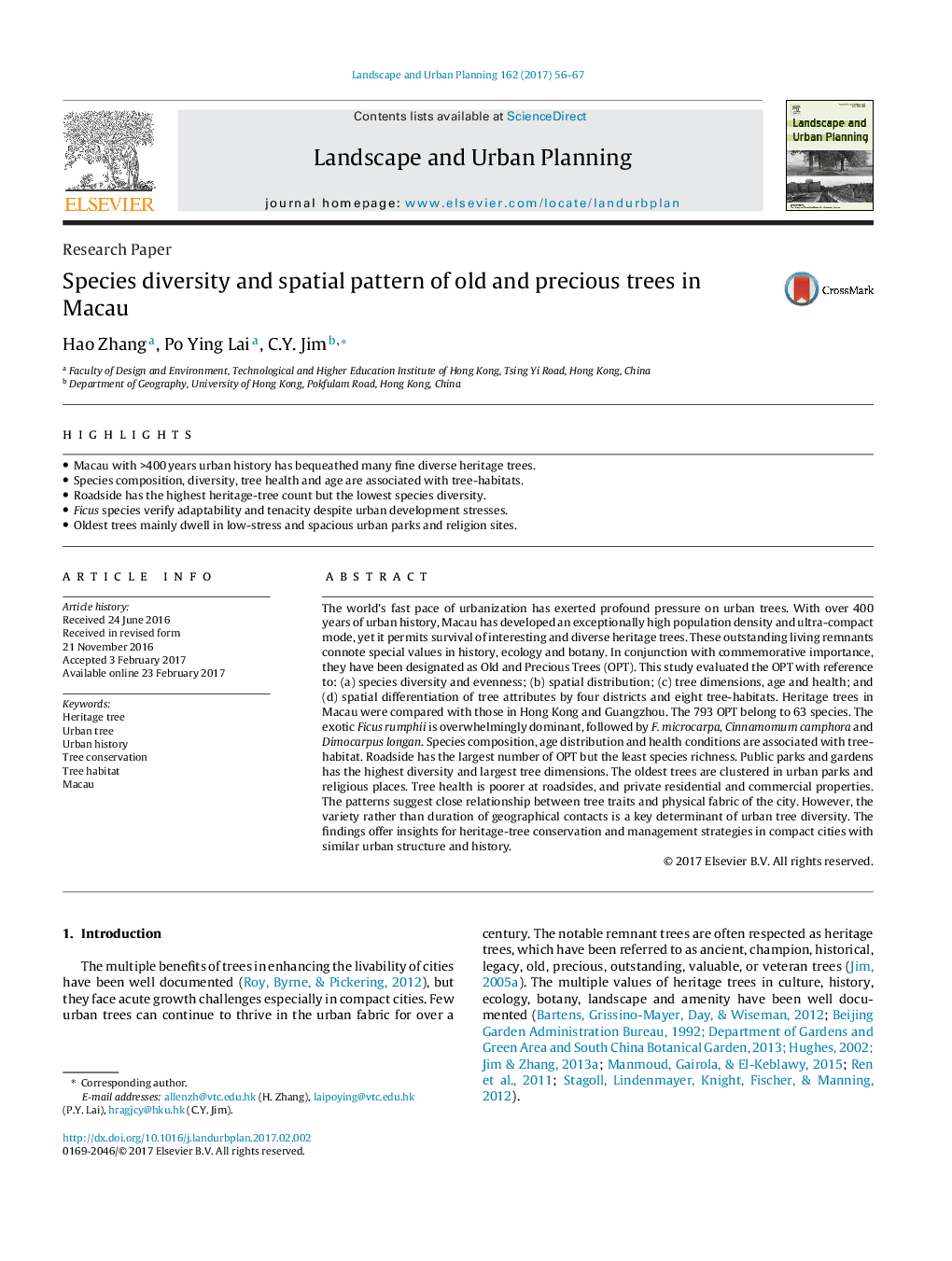| Article ID | Journal | Published Year | Pages | File Type |
|---|---|---|---|---|
| 5115045 | Landscape and Urban Planning | 2017 | 12 Pages |
â¢Macau with >400 years urban history has bequeathed many fine diverse heritage trees.â¢Species composition, diversity, tree health and age are associated with tree-habitats.â¢Roadside has the highest heritage-tree count but the lowest species diversity.â¢Ficus species verify adaptability and tenacity despite urban development stresses.â¢Oldest trees mainly dwell in low-stress and spacious urban parks and religion sites.
The world's fast pace of urbanization has exerted profound pressure on urban trees. With over 400 years of urban history, Macau has developed an exceptionally high population density and ultra-compact mode, yet it permits survival of interesting and diverse heritage trees. These outstanding living remnants connote special values in history, ecology and botany. In conjunction with commemorative importance, they have been designated as Old and Precious Trees (OPT). This study evaluated the OPT with reference to: (a) species diversity and evenness; (b) spatial distribution; (c) tree dimensions, age and health; and (d) spatial differentiation of tree attributes by four districts and eight tree-habitats. Heritage trees in Macau were compared with those in Hong Kong and Guangzhou. The 793 OPT belong to 63 species. The exotic Ficus rumphii is overwhelmingly dominant, followed by F. microcarpa, Cinnamomum camphora and Dimocarpus longan. Species composition, age distribution and health conditions are associated with tree-habitat. Roadside has the largest number of OPT but the least species richness. Public parks and gardens has the highest diversity and largest tree dimensions. The oldest trees are clustered in urban parks and religious places. Tree health is poorer at roadsides, and private residential and commercial properties. The patterns suggest close relationship between tree traits and physical fabric of the city. However, the variety rather than duration of geographical contacts is a key determinant of urban tree diversity. The findings offer insights for heritage-tree conservation and management strategies in compact cities with similar urban structure and history.
